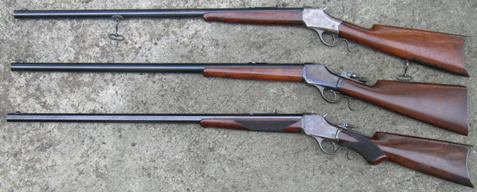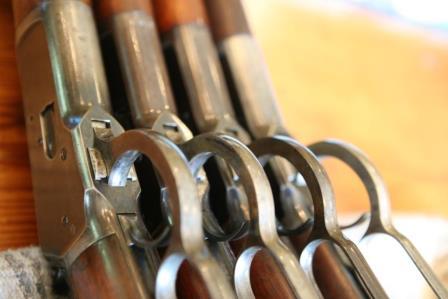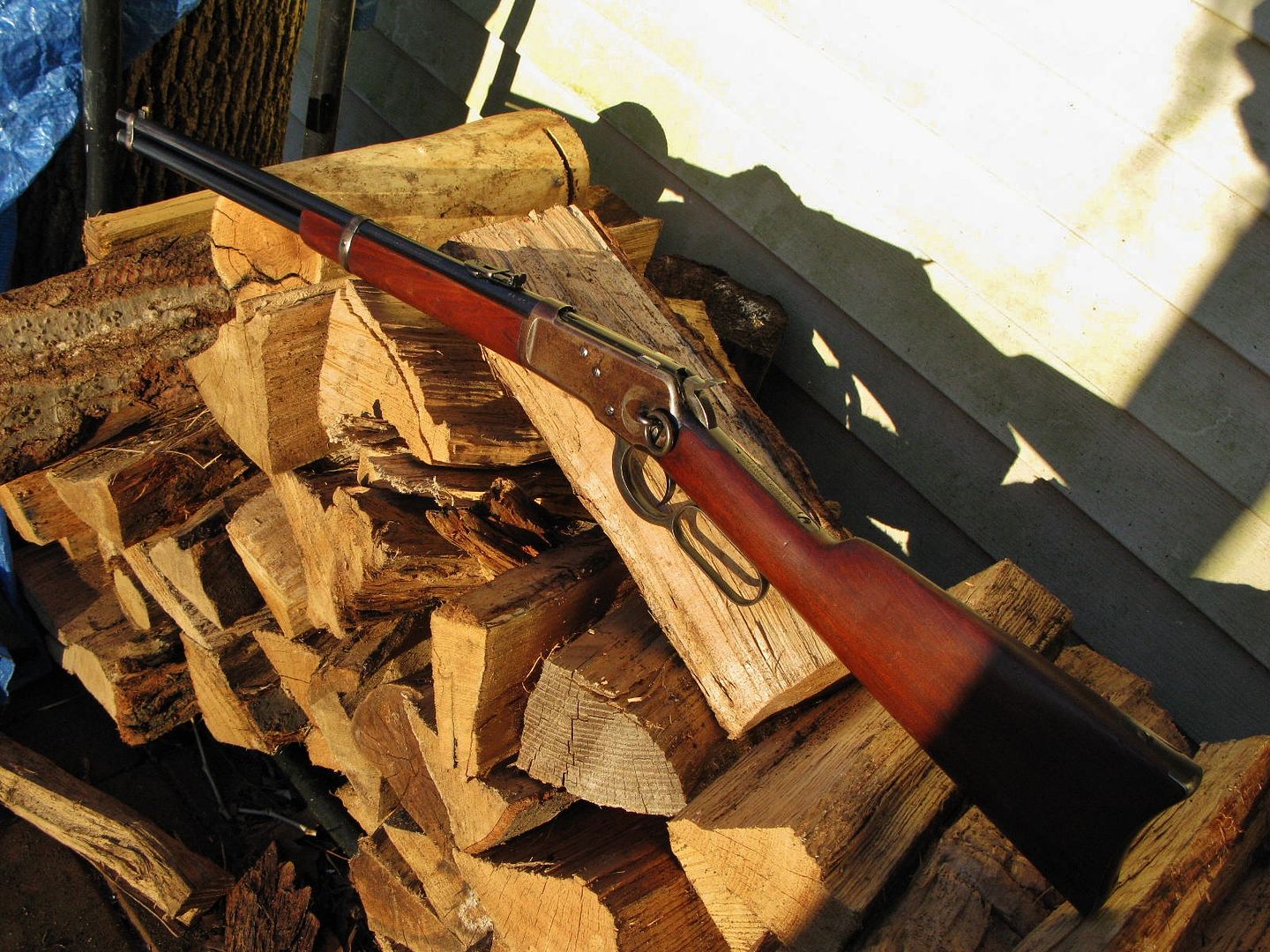For the sake of clarity regarding bluing:
When did the period of manufacturing begin and what caused flaking to begin in the manufacturing process?
When was a process changed in manufacturing and what was the change ?
Was the defective process used in all models made in the period ?
Bill
Bill,
We have discussed this exact topic on the WACA forum several times in the past. The “Flaking” period began in the mid to late teens (approximately 1917/18), and it continued through the early to mid 1930s. Winchester made a change from “furnace” bluing to “machine” bluing, and that is when the flaking receiver frames began to appear. The “machine” bluing process was used on all of the models in production during the afore mentioned years.
Bert
WACA Historian & Board of Director Member #6571L

Blueliner said
Also, there are those that just plain forgot one or the other !!
Like me. I also forgot the explanation of “machine bluing,” but here it is:
https://winchestercollector.org/forum/general-discussions-questions/model-70s-and-54s/page-3/#p66930
CJS57 said
My Model 1892 made in 1910 and serial 596802 is original blue and clearly has flaking blue on the receiver. Not wear or usage. How does this fit in with the 1917 time frame of flaking beginning?
I don’t know, but your photo illustrates why a saddle ring is the stupidest excrescence ever hung on a gun.
I don’t know if “stupid” is actually a good descriptor for a saddle ring. When they were attached at the time I’m sure there were many people who came home intact because that ring kept their carbine where it should be when needed. It’s when these rifles transformed from being necessary tools to objects of art, where the highest level of preservation became the most important aspect, that things causing wear were vilified.
Of course I love seeing a 130 year old firearm that managed to escape the ravages and present itself as it was the day it left shipping but those aren’t what makes our minds flood with visions of our ancestors using these tools.
CJS57,
Please post photographs of the entire firearm, as this may just be wear commensurate with the rest of the gun, and not necessarily flaking.
Clarence,
The saddle ring was applied to a firearm in an era when the gun was a tool and not necessarily a collector’s item. Today, the pattern of wear can be used to assess originality. Wear patterns not consistent with the rest of the gun can suggest subsequent refurbishment.
mrcvs said
Clarence,The saddle ring was applied to a firearm in an era when the gun was a tool and not necessarily a collector’s item. Today, the pattern of wear can be used to assess originality. Wear patterns not consistent with the rest of the gun can suggest subsequent refurbishment.
Actually what you seem to be suggesting is that they were put there with future collectors in mind! To assess originality! I’ll allow they could be useful for that purpose. (Just kidding!)
However, the original purpose “when the gun was a tool” was, supposedly, for attaching a cavalryman’s sling, as troopers carried trapdoor carbines (which also required a boot hung from the saddle). There are thousands of period photos of cowboys, hunters, frontiersmen, carrying rifles in saddle scabbards or across their saddle bow in a simple leather loop hooked over the horn, but have you ever seen a photo of a civilian carrying a saddle-ring carbine hung from the shoulder? Something that serves no useful purpose except to rattle qualifies, I think, as “stupid.”
CJS57 said
My Model 1892 made in 1910 and serial 596802 is original blue and clearly has flaking blue on the receiver. Not wear or usage. How does this fit in with the 1917 time frame of flaking beginning?
I would not classify the condition of the bluing on your Model 1892 as “flaking”. Instead, it shows a relatively even (heavy) patina. The attached pictures I have included show classic flaking on a Model 55 Take Down rifle.
Bert
WACA Historian & Board of Director Member #6571L

More Pictures. I don’t see how anyone could think that wear or usage caused the receiver to be like it is. The blue appears to be torn off like paint flakes with sharp demarcation lines between blue and patina. The proof marks are proud. The overall condition of the rifle is far better than the near 0% receiver.
http://i857.photobucket.com/albums/ab133/CJS57/Winchester%201892%20SRC%204440/IMG_0737_zpsnbkq3l3x.jpg
http://i857.photobucket.com/albums/ab133/CJS57/Winchester%201892%20SRC%204440/IMG_0726_zps0qfedazo.jpg
http://i857.photobucket.com/albums/ab133/CJS57/Winchester%201892%20SRC%204440/IMG_0724_zpsr8b35qmx.jpg
http://i857.photobucket.com/albums/ab133/CJS57/Winchester%201892%20SRC%204440/IMG_0720_zps0f31f56d.jpg
http://i857.photobucket.com/albums/ab133/CJS57/Winchester%201892%20SRC%204440/IMG_0706_zpspwevwdtg.jpg
http://i857.photobucket.com/albums/ab133/CJS57/Winchester%201892%20SRC%204440/IMG_0698_zpsz5rl9d42.jpg
[Image Can Not Be Found]
CJS57,
In my survey of the Model 1892/92 rifles I have looked at just over 12,100 individual examples in all states of condition. I would agree that your rifle looks much more like an example of poor condition and wear than the sort of examples of the classic flaked bluing seen on Winchester rifles. I have attached a couple of photos below. And thanks for the SN of your rifle. I have added it into my data.
Michael

Model 1892 / Model 61 Collector, Research, Valuation
I tend to think that the period Bert mentioned is when flaking was a far more serious problem than similar issues that are seen on some earlier guns. For example, during the later period, one see guns in very good to excellent condition with thick, like new bluing with, perhaps, large splotches here and there where patina in varying degrees has established itself. OTOH, I think the pictures that CJS57 has posted shows flaking as well.
James
Added: I just saw Michael’s post, and the pictures he posted shows a pattern of flaking similar to the one that I described.
Here is an example of a 1920s rifle that has flaking on the left side of the receiver that has the quality of blue and flaking similar to that shown in the pictures that Michael posted, but on the right side of the receiver, the flaking has progressed to a pattern somewhat similar to those pics posted by CJS57:
Twobit, Your 92 with flaking is exactly like my 92 with flaking. Only mine has progressed to almost everywhere on the receiver while yours is only those big spots of it. My gun has very nice even high condition of barrel, tube, stock and case colors that would not be there if the gun was in poor condition. I guess we will just have to disagree.
About Bert’s Model 55 example, I see mainly edge Wear and Handling marks mixed in with some flaking?
From 5 years ago: https://winchestercollector.org/forum/winchester-rifles/Receiver+bluing+flaking+problem+on+Winchesters/
Pictures of another early (note case colored lever) 1892 with what I consider classic flaking (2nd Picture): http://www.hallowellco.com/flaking.htm
1 Guest(s)


 Log In
Log In Members
Members Home
Home

 Add Reply
Add Reply Add Topic
Add Topic Offline
Offline















